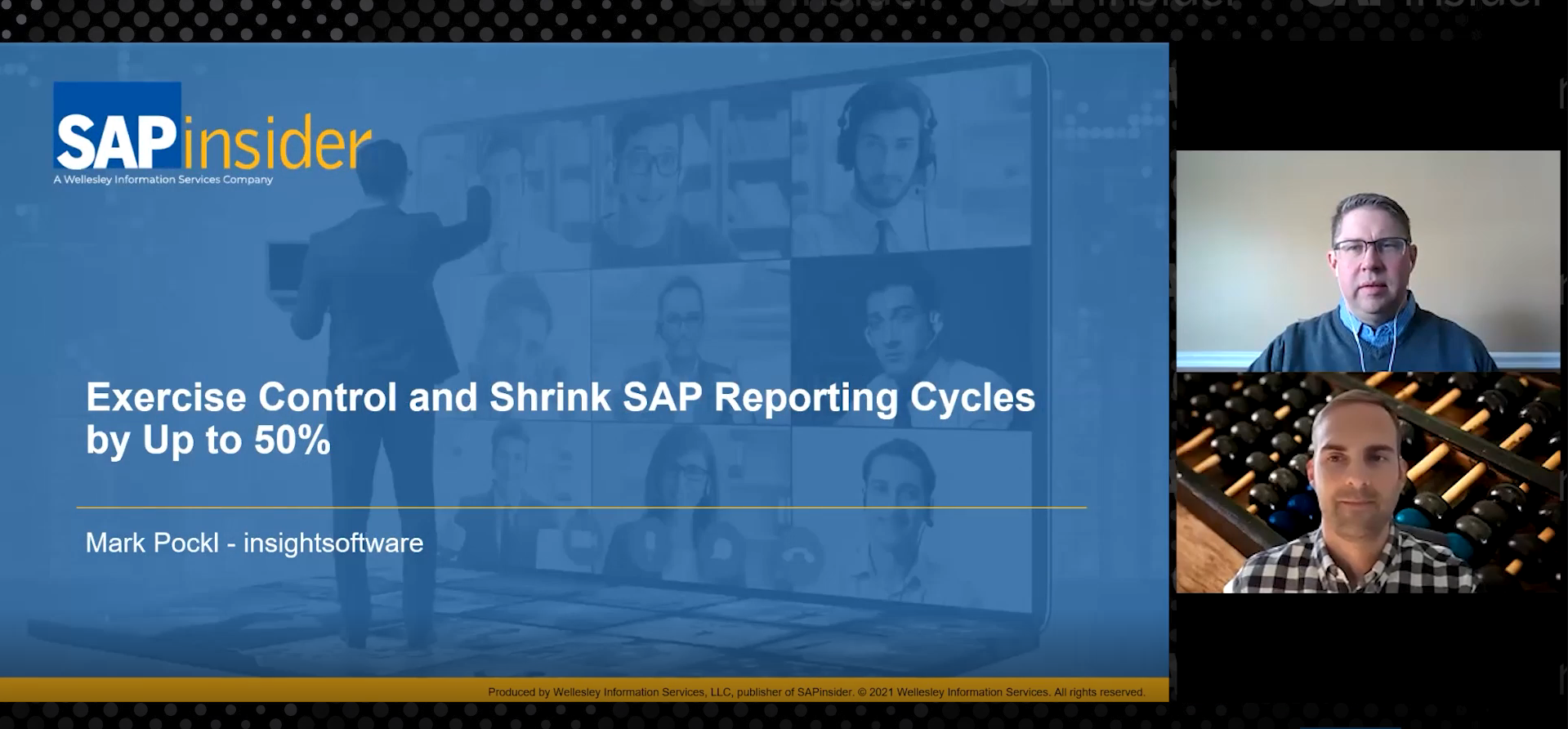Streamline and Automate SAP ERP Financials Processes with Financial Close Management Software
Q&A with Susan Parcells and Michael Gilmartin of BlackLine
Q: Before an organization starts automating account reconciliation processes, what are some prerequisites that should be in place?
Susan Parcells (SP): Some best practices to follow before beginning the automation process include: scrub the chart of accounts by closing accounts that are no longer in use and making any necessary corrections; run a trial balance to make sure all accounts are assigned an appropriate preparer and approver; create or update the overall account reconciliation policy to ensure it is accessible to everyone participating in the reconciliation process; create or update desktop procedures, including what the account is for and how to prepare the reconciliation; decide which type of template would make sense based on the type of account; and finally, include the whole financial team in the preparations and get them excited about the change.
Q: What are the options for automating and streamlining the financial close process?
SP: There are a couple options: SAP offers the SAP Financial Closing cockpit, which provides an overall view of the entire closing cycle and schedules automated tasks. BlackLine offers BlackLine Financial Close Management software, which is a suite of financial close products to help automate activities ranging from journal entries, account reconciliations, and checklist management. BlackLine also offers BlackLine Variance Analysis, a product that quickly identifies anomalies based on predetermined criteria to help eliminate last-minute panic in journal entries.
Q: On average, how long does it take to automate financial close processes?
SP: The time can vary depending on priorities and the number of folks involved. The good news is that it requires little IT involvement and is more driven by the abilities of the users in the accounting team. Some organizations have implemented financial close automation as quickly as one-to-three months, while others have taken longer. Factors that contribute to the length of the implementation include the presence of global operations or other locations that need access to the technology. Oftentimes, a phased rollout approach is best for that scenario. Additionally, implementation times can depend on the number of processes being automated. If it is just one, say account reconciliations or checklist management, those can be done fairly quickly. Automating multiple areas, such as account reconciliations, journal entries, and variance analysis, may take a little more time.
Q: How can companies speed up the time it takes to extract data from SAP ERP?
Michael Gilmartin (MG): BlackLine has a pre-built, SAP-certified connector that extracts the data necessary for BlackLine usage. This connector allows SAP end users to make selections in terms of company codes, accounts, profit centers, and so forth. This makes it easy to split up extractions by company code or other characteristics and schedule extractions separately to meet the business needs and reduce the volume of data being extracted at one time. Because the connector is SAP-certified, it is also efficient with query logic.
Q: How can companies facilitate intercompany eliminations for reporting in areas such as profit, material transactions, and so on?
MG: BlackLine has several solutions that facilitate end-to-end intercompany transaction processing to help organizations gain efficiencies and control around intercompany accounting. BlackLine Intercompany Hub provides workflow and collaboration between entities to validate and reconcile intercompany transactions prior to posting. It automatically posts the transactions simultaneously across multiple entities, ensuring that intercompany entries always balance. The BlackLine Account Reconciliations product provides and validates audit trails to prove that intercompany eliminations are reconciled. Financial information can also be loaded into such a product alongside logic that was created to propose and/or generate elimination entries.
Q: What is the best way to automate the financial close process with an eye toward error management?
SP: There are several ways of handling this, depending on the process. With respect to account reconciliations, BlackLine Account Reconciliations has several embedded controls that help decrease the risk of errors, including:
- Visibility for ensuring that all balance sheet accounts are reconciled
- Notifications that alert administrators when a new general ledger (GL) account is added that needs to be assigned to a preparer and approver/reviewer
- A system that sends messages to the preparer if an account has already been reconciled but the balance has changed, alerting him or her to re-do the reconciliation to tie it back to the GL
- Standard templates for various types of accounts — such as bank templates, prepaid accounts, accruals, and calculated balances — that help make it easier for management to review and identify any potential errors or concerns
- A built-in document repository where support documentation can be uploaded and associated with the respective reconciliation, making it more complete for managers and auditors to review
- A feature that automatically populates certain data, such as the GL balance within the template, and prevents it from being manually edited
With respect to journal entries, the BlackLine Journal Entry product, provides built-in workflow approval that allows users to create and approve entries, an audit trail that shows who created and approved entries and when, and a document repository that stores the support associated with the respective journal entry.
For managing the overall close activities and even controls, the BlackLine Task Management product provides a platform that helps ensure all tasks are completed and gives management the visibility to immediately address ones that are not. It helps ensure everything is being done at the right time by the right people.
Q: How should users monitor the automated process to make sure it’s performing correctly?
SP: Depending on the process, there are ways to double check what the system has done. For example, certain GL accounts can be automatically reconciled — such as zero-balance accounts, accounts with no activity, subledger accounts that match to the GL, and prepaid accounts. Users can go in and manually review what has been done. Some organizations run a trial balance and occasionally compare that to all of the accounts in their automation tool to ensure that everything is being pulled in and reconciled.
Another area companies may want to monitor is transaction matching automation. Because accountants are now eliminating the time it takes to manually match those transactions, they have more time to review them to identify if something in the logic or the process needs to be adjusted.





